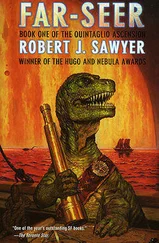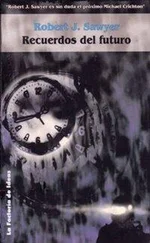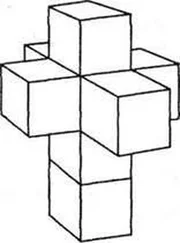Illegal Alien
by Robert J. Sawyer
For Justice, though she’s painted blind, is to the weaker side inclined.
—SAMUEL BUTLER (1612–1680)
The Navy lieutenant poked his close-cropped head into the aircraft carrier’s wardroom. “It’s going to be another two hours, gentlemen. You should really get some sleep.”
Francis Nobilio, a short man of fifty with wavy hair mixed evenly between brown and gray, was sitting in a vinyl-upholstered metal chair. He was wearing a two-piece dark-blue business suit and a pale blue shirt. His tie was undone and hung loosely around his neck. “What’s the latest?” he said.
“As expected, sir, a Russian sub will beat us to the location. And a Brazilian cruise ship has changed course to have a look-see.”
“A cruise ship!” said Frank, throwing his arms up in exasperation. He turned to Clete, who was leaning back in a similar chair, giant tennis-shoed feet up on the table in front of him.
Clete lifted his narrow shoulders and grinned broadly. “Sounds like a big ol’ party, don’t it?” he said, his voice rich with that famous Tennessee accent—Dana Carvey did a devastating Cletus Calhoun.
“Can’t we cordon off the area?” said Frank to the Navy man.
The lieutenant shrugged. “It’s in the middle of the Atlantic, sir—international waters. The cruise ship has as much right to be there as anyone else.”
“ The Love Boat meets Lost in Space ,” muttered Frank. He looked up at the Navy man. “All right. Thanks.”
The lieutenant left, doing a neat step over the raised lip at the bottom of the door.
“They must be aquatic,” said Frank, looking at Clete.
“Mebbe,” said Clete. “Mebbe not. We ain’t aquatic, and we used to land our ships at sea. This very aircraft carrier picked up an Apollo command module once, didn’t it?”
“My point exactly,” said Frank. “We used to land our ships at sea, because that was easier than landing them on land, and—”
“I thought it was because we launched out over the ocean from Canaveral, so—”
“The Shuttle goes up from Canaveral; we bring it down on land. If you’ve got the technology, you come down on land—if that’s where you live; the Russians came down on land from day one.”
Clete was shaking his head. “I think you’re missing the obvious, Frankie. What was it that boy said a moment ago? ‘International waters.’ I think they’ve been watching long enough to figger it’d be a peck o’ trouble landin’ in any particular country. Only place on Earth you can land that ain’t nobody’s turf is in the ocean.”
“Oh, come on. I doubt they’ve been able to decipher our radio or TV, and—”
“Don’t need to do none o’ that,” said Clete. He was forty years old, thin, gangly, jug-eared, and redheaded—not quite Ichabod Crane, but close. “You can deduce it from first principles. Earth’s got seven continents; that implies regional evolution, and that implies territorial conflict once the technology reaches a level that lets you travel freely between the continents.”
Frank blew out air, conceding the point. He looked at his watch for the third time in the last few minutes. “Damn, I wish we could get there faster. This is—”
“Hang on a minute, Frankie,” said Clete. He used one of his long arms to aim the remote at the seventeen-inch color TV mounted on the wall, turning off the mute. The aircraft carrier was picking up CNN’s satellite feed.
“…more now on that story,” said white-haired Lou Waters. “Civilian and military observers worldwide were stunned late yesterday when what was at first taken to be a giant meteor skimmed through Earth’s atmosphere over Brazil.” Waters’s face was replaced with grainy amateur video of something streaking through a cloudless blue sky. “But the object flew right around the Earth well inside our atmosphere, and soon almost every public and private telescope and radar dish on the planet was trained on it. Even the U.S. government has now conceded that the object is, in all likelihood, a spacecraft—and not one of ours. Karen Hunt has more. Karen?”
The picture changed to show a pretty African-American woman, standing outside the Griffith Park Observatory. “Lou, for decades human beings have wondered if we are alone in the universe. Well, now we know. Although the U.S. and Russian military aircraft that flew over the splashdown site earlier today failed to make public the videos they shot, a Moroccan Airlines 747 en route to Brasilia passed directly over the area about three hours ago.
That plane has now safely landed, and we’ve obtained this exclusive footage, taken by passenger Juan Rubenstein with his home-video equipment.”
The image was coarse, but it clearly showed a large object shaped like a shield or a broad arrowhead floating atop gray water. The object seemed capable of changing colors—one moment it was red; the next, orange; then yellow. It cycled through the hues of the rainbow, over and over again, but with a considerable period of pure black between being violet and red.
Cut to a dour, middle-aged man with an unkempt beard. The title “ ARNOLD HAMMERMILL, PH.D., SCRIPPS INSTITUTE,”appeared beneath him. “It’s difficult to gauge the size of the spaceship,” said Hammermill, “given we don’t know the precise altitude of the plane or the zoom setting used at the time the video was taken, but judging by the height of the waves, and taking into account today’s maritime forecast for that part of the Atlantic, I’d say the ship is between ten and fifteen meters long.”
A graphic appeared, showing the vessel to be about half the size of a Space Shuttle orbiter. The reporter’s voice, over this: “The United States aircraft carrier Kitty Hawk is on its way now to the splashdown site. Earlier today, the president’s science advisor, Francis Nobilio” (black-and-white still of Frank, a few years out of date, showing his hair as mostly brown) “and astronomer Cletus Calhoun, best known as the host of PBS’s popular Great Balls of Fire! astronomy series” (silent clip of Clete at the rim of Arizona’s Barringer crater) “were flown by military jet to the Kitty Hawk , and are now on their way to rendezvous with the alien ship. The Kitty Hawk should reach its destination in just over one hundred minutes from now. Bobbie and Lou?”
Back to CNN Center in Atlanta and a two-shot of Lou Waters and Bobbie Battista. “Thanks, Karen,” said Battista. “Before Dr. Calhoun left the U.S., our science correspondent Miles O’Brien managed to interview him and University of Toronto exobiology professor Packwood Smathers about what this all means. Let’s have another look at that tape.”
The image changed to show O’Brien in front of two giant wall monitors.
The one on the left was labeled TORONTO and showed Smathers; the one on the right was labeled LOS ANGELES and showed Clete.
“Dr. Smathers, Dr. Calhoun, thanks for joining us on such short notice,” said O’Brien. “Well, it looks like the incredible has happened, doesn’t it? An alien spaceship has apparently landed in the middle of the Atlantic. Dr. Smathers, what can we expect to see when this ship opens up?”
Smathers had a square head, thick white hair, and a neatly trimmed white beard. He was wearing a brown sports jacket with leather patches on the elbows—the quintessential professorial look. “Well, of course, we first have to suspect that this ship is unmanned—that it’s a probe, like the Viking landers, rather than carrying a crew, and—”
“Look at the size of the thing,” said Clete, interrupting. “Pete’s sake, Woody, ain’t no need for the thing to be that big, ’less it’s got somebody aboard. ’Sides, it looks like it’s got windows, and—”
Читать дальше











